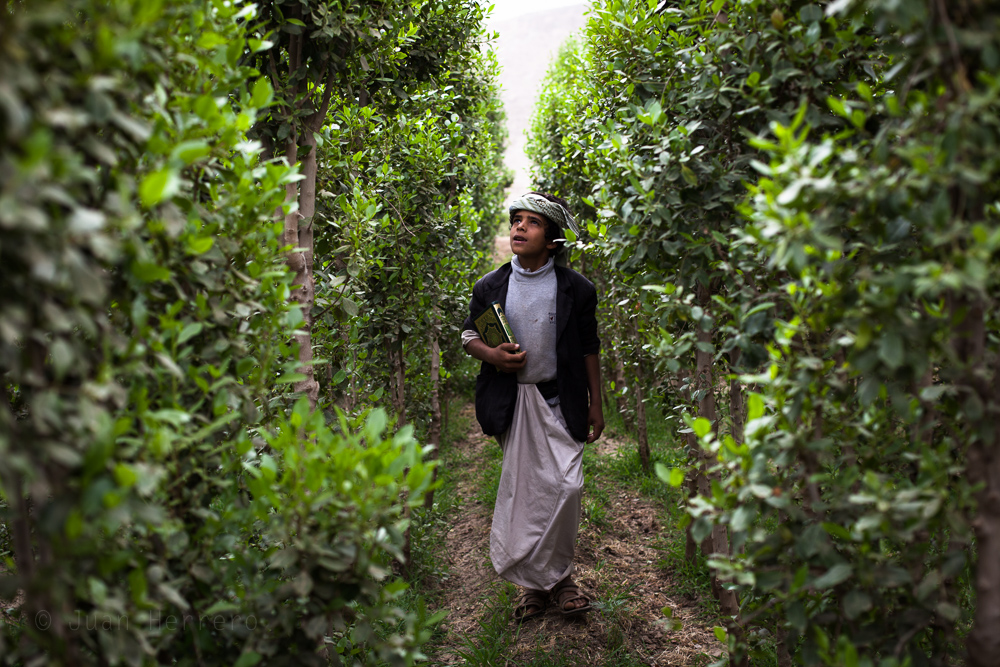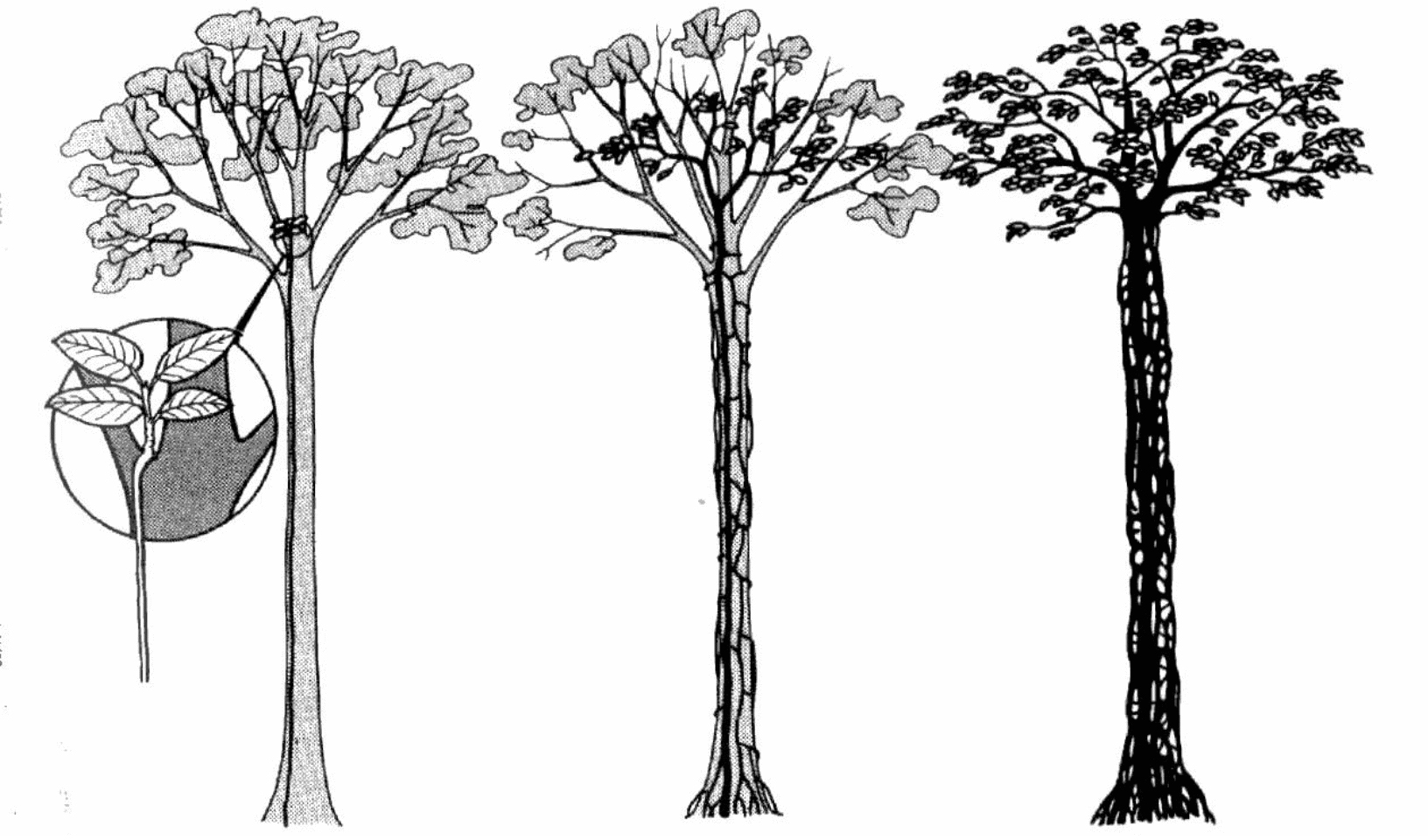Mirungi tree
During my journeys to Naish I couldn't help but sample the mirungi leaf, a daily ritual for the natives. I confess I found great pleasure in the rush it provided, and I still drink Naiisi tea on occasion.Native to the tropical jungles of Naish, the mirungi tree is best known for the leaves it produces. In their raw form, mirungi leaves can be chewed as a stimulant, a popular practice in northeastern Naish. The mirungi tree is also colloquially known as the "strangling tree" due to its unique method of growth.
Basic Information
Genetics and Reproduction
The mirungi tree begins its life cycle high above the forest floor, in the forks of other tree's branches. From there it sends long, thin roots downwards to reach the soil and water below. These roots grow in thickness and number over time, slowly encircling its host. The mirungi's leaves also grow up and over the leaves of its host, cutting it off from sunlight. Eventually, the host tree will die and rot away, leaving behind a hollow lattice of massive roots.
Growth Rate & Stages
The mirungi tree takes approximately eight years to reach its full height and lives for up to 300 years.
Ecology and Habitats
Mirungi trees thrive in hot, humid conditions, like those of the Naiisi jungles. However, they can survive in cooler environments provided they have sufficient access to water and sunlight.
The mirungi's parasitic nature proves particularly effective outside of its native habitat, growing rapidly when introduced to new environments.
Dietary Needs and Habits
Mirungi trees require a large amount of water to reach full heights but can be sustained with less. Otherwise, access to sunlight is all it requires.
Biological Cycle
The mirungi tree keeps its leaves year-round, but in spring it grows clusters of small orange-red flowers. These flowers develop into pairs of winged seed pods, which fall in late summer or early fall.
Additional Information
Uses, Products & Exploitation
The mirungi tree is primarily harvested for its leaves, which can then be dried for use in Naiisi tea or further processed into Tinctura Mirungi.
Recreational drug
Naiisi tea, leavesMedicinal uses
Take of recently dried Mirungi leaves, one handful; diluted Alcohol, two pints. Macerate for a half-month, express, and filter through fine cloth.
Dose, ten to thirty drops; effects present themselves inside five minutes.
Historic uses
Naiisi tribes have made use of mirungi leaves for centuries. Often chewed before a hunt or battle, the leaf's stimulating properties helped improve focus and awareness.Geographic Origin and Distribution
Native to the tropical jungles of Naish, primarily the northeastern regions. Mirungi trees can also be found in southern Sundercrag and scattered across southwestern Gracia.
Lifespan
200-300 years
Average Height
300 feet (~100 meters)
Remove these ads. Join the Worldbuilders Guild










Comments
Author's Notes
The mirungi tree was created for the Masters’ Monthly #4 Competition - Specious Species. Given that this is for a D&D setting, my world already has more creatures than I can count. So I decided to look to the flora instead! Also, don't do drugs, drugs are bad, disregard anyone chewing mirungi leaves.